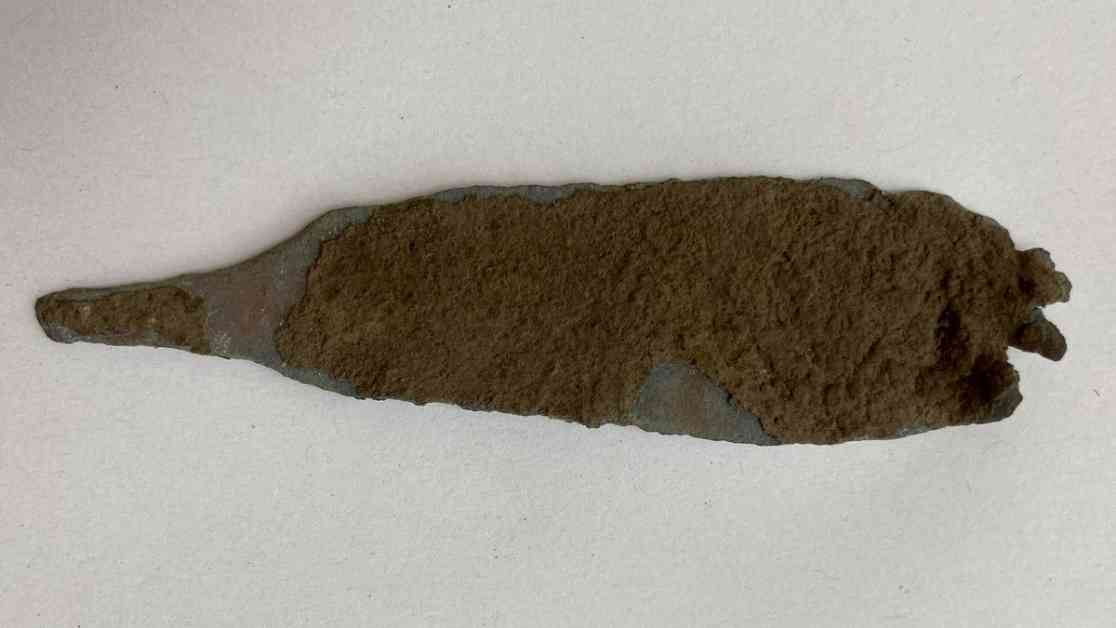Archaeologists recently made a remarkable discovery in a cave in northeastern Italy – a 4,000-year-old copper dagger along with fragments of human skulls. The cave, known as Tina Jama Cave, was used for burials and also contains the remains of an ancient hearth. This find is significant because it is rare to uncover metal artifacts like a dagger in this context.
The discovery was made by Federico Bernardini, an archaeologist from Ca’ Foscari University in Venice, who described the moment of uncovering the dagger as unforgettable. Burials in caves were common in the region between 4,500 and 4,000 years ago, during the late Copper Age and early Bronze Age. However, finding a copper dagger in this cave was unexpected as such rare artifacts are typically found in places of worship.
The dagger is just one of several artifacts found in Tina Jama Cave, which is located in the Karst Plateau along the border of Italy and Slovenia. The excavation is ongoing and is providing valuable data to reconstruct the area’s prehistory. The blade of the copper dagger is attached to a tang, which would have secured it in a handle made of wood or bone, although the handle has since rotted away.
The excavations have revealed layers from the final stages of the Copper Age and the beginning of the Bronze Age, offering insights into the technological advancements and cultural transformations of Europe during this time. The archaeologists are using advanced methods such as structure-from-motion photogrammetry to create 3D maps and carefully sieving the soil to collect as much information as possible.
One of the most intriguing features of Tina Jama Cave is a structure that closed off the entrance with stone slabs and blocks, dating to around 2000-1500 B.C. This structure’s purpose remains unknown, but it may have been built to protect the cave from the strong winter winds in the region. Human skull fragments found nearby suggest that the cave may have been used for burials, although further dating is needed to confirm this.
In addition to the copper dagger, the excavations have also uncovered a hearth or fireplace that predates the stone structure at the cave entrance. This indicates that groups of people used the cave entrance before the construction of the stone structure. The findings suggest a connection to the Cetina culture from modern-day Croatia, an early Bronze Age group.
Overall, the discovery of the copper dagger in Tina Jama Cave provides valuable insights into the prehistoric period in Italy and sheds light on the technological skills and cultural practices of ancient groups who inhabited the region thousands of years ago. The ongoing excavations are expected to yield more discoveries that will contribute to our understanding of Europe’s ancient past.










